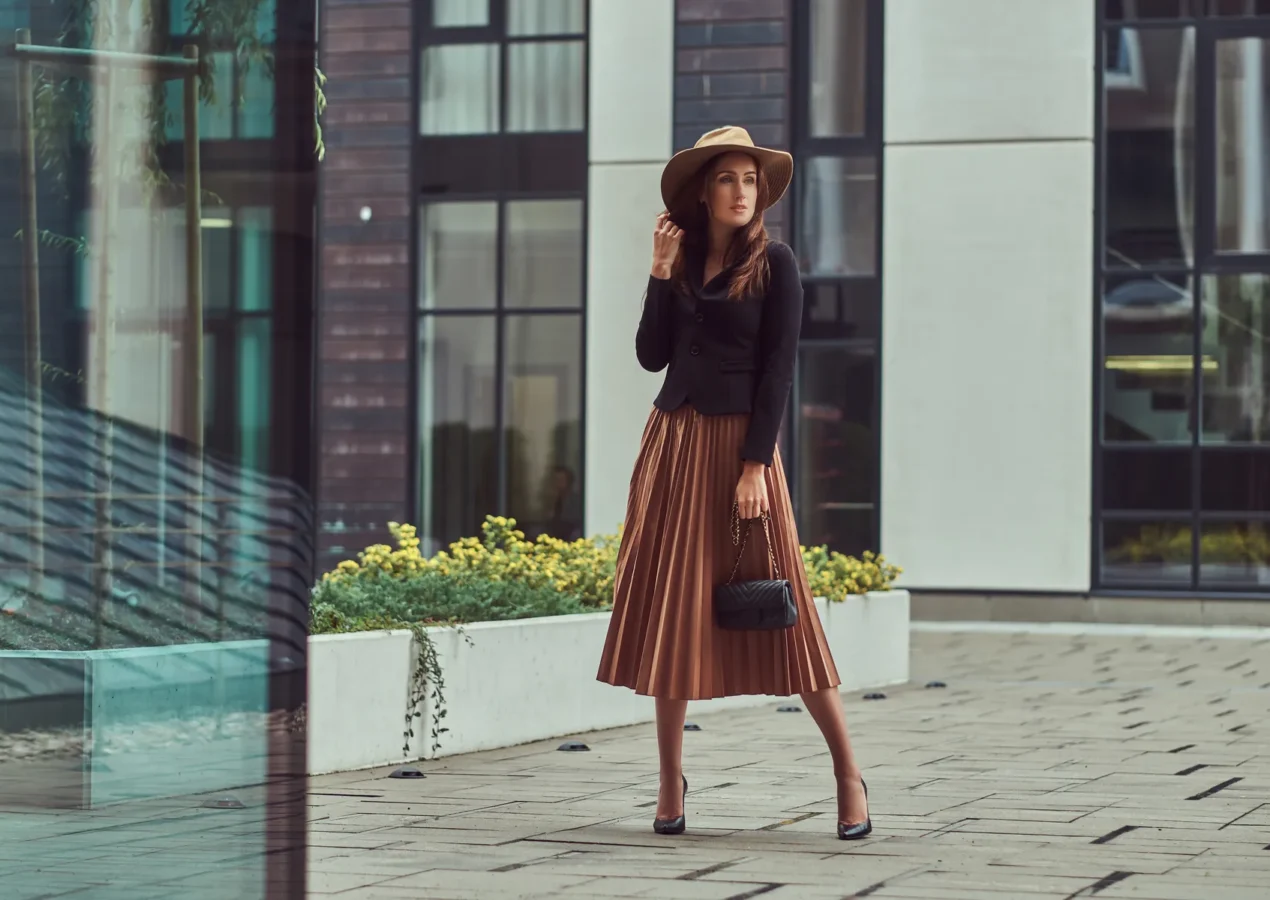Introduction
European fashion shows readers regal buildings, rebellious streets, and the constantly shifting landscapes of society. This European fashion history tour has everything from the luxurious Renaissance to the bold modern era. Clothing means changing culture, rebelling, and always trying to be unique. Explore fashion’s past, from clothes worn by kings and queens to clothes worn by regular people. Styles are constantly changing and growing.
The Renaissance Era
During the Renaissance, European dress changed a lot. It went from clothes to art. New fashion ideas grew in royal halls. High society was marked by its fancy fabrics and designs. Unlike the Middle Ages, this was a time when people liked to live in style. Fashion, which used to be limited by custom, became a sign of cultural maturity and helped shape Europe’s personality.
Baroque and Rococo Fashion
European fashion was very fancy and expensive during the Baroque and Rococo eras. At that time, fancy styles and expensive fabrics meant wealth, and they showed how much people valued them. Accessories and wigs became like works of art. The visual feast wowed the kings and nobility of Europe.
The Victorian Age of European Fashion
In Europe during the Victorian age, clothes became less flashy and more straightforward. Queen Victoria set the trends in dress. She wore more traditional clothes that weren’t as flashy during this time. Clothes with high collars, corsets, and long skirts were worn to show respect for social norms and rules. Victorian society was very traditional and heavily based on industry. That style is still popular today.
The Roaring Twenties of European Fashion
During the Roaring Twenties, European Fashion changed to reflect the happiness and social changes of the time. Fashionapper clothes, with unusual patterns and shorter skirts, were a sign of freedom. The 1910s were severe, but the 1920s were fun and daring. The dress of the time was influenced by jazz music, freedom, and revolt. The Roaring Twenties changed both dress and social norms.
World War II and Fashion
During WWII, European clothing changed to fit the times. Because there weren’t as many fabrics, outfit designs got simpler and better. Because of the rules, people dressed very strongly during the war. Costly clothes were forgotten. Despite problems, small changes led to trends after the war. How World War II changed dress showed how flexible and intelligent people were.
The Swinging Sixties
The Swinging Sixties were different from the past. European dress vividly showed how society and culture were changing. The fashion world was entirely of revolt and change. During this time, miniskirts, bright designs, and trippy prints became popular. Designers like Mary Quant and Andre Courreges first created daring and one-of-a-kind styles. Things like dress and social norms changed in the 1960s.
Punk and Subcultures of European Fashion
Punk and other dress subcultures in Europe in the late 20th century broke the rules set by society as a whole. The punk movement was strong, with ideas that were against the system, a do-it-yourself style, and a lack of concern for fashion rules. People connected the movement with torn clothes, leather jackets, and flashy accessories. Punk made people question dress and social rules, leaving a lasting mark. The street dress was strongly affected by punk subcultures.
fashion in the 80s and 90s
During the 1980s and 1990s, Europe was the Fashion of High Fashion, luxury, and well-known designers and fashion companies. The fashion styles this time had bright colors, big shapes, and strange materials. Chanel and Versace put on a stunning fashion show. Naomi Campbell, Cindy Crawford, and other stars represented the glitz of the time; fashion in the 1980s and 1990s was all about daring experiments.
Modern Minimalism
EurFashionashion in the late 20th century was dominated by modern simplicity. Fashion clothes were more in the beginning for Jil Sander and Calvin Klein. People learned about fancy clothes and how to appreciate simple beauty during the minimalist trend, emphasizing simple shapes, neutral colors, and quality over numbeFashionashion, living, and design. Modern minimalism favors classic and fashionable clothes.
Street Style Revolution
Street fashion changed 21st-century EurFashionashion. Art, music, and worldwide youth culture democratized street style. SFashion defied runways. Londres, Paris, and Berlin had different street fashion. People affected fashion in the Street Style Revolution.
Art, music, and worldwide youth culture democratized street style. SFashionashion defied runways. Londres, Paris, and Berlin had different street fashion. People affected fashion in the Street Style Revolution.
The Digital AFashionFashionuropean Fashion
TFashiongy has changed European Fashion in the Digital Age. Fashion is more accessible internationally because of fashionable media and internet outlets. Digital channels made fashion idols tastemakers who influenced purchases. E-commerce changed apparel sales. The internet revolution makes it harder to discern high-end from street style, creating a continuously shifting and connected fashion universe.
Sustainable Fashion Movement
In the 21st century, European fashion sought eco-friendliness and sustainability. PFashionrew was more socially and fashionably conscious, starting the Sustainable Fashion Movement. Designers’ objectives included eco-friendly materials, fair labor, and circular fashion. Eco-conscious customers choose sustainable fashion to reduce their environmental impact, which is critical to fashion.
Influential Fashion Icons
Pioneering designers have influenced fashion. Coco Chanel’s traditional style, Alexander MFashions’ experiments with women’s fashion, Versace’s creativity, and Vivienne Westwood’s financial acumen influenced fashion. These runway legends established a cultural fashion that is still in fashion.
The Rise of Inclusivity in Fashion
In refashions, fast fashions have broken down gender and ethnicity boundaries. This movement supports body acceptance and representation, spawning different models, designers, and styles. Since brands make clothes that fit all body shapes and encourage uniqueness, beauty standards are more progressive.
The Influence of Celebrity Culture
Celebrities heavily influence European design. Their outfits influence consumer tastes and market direction, from the red carpet to social media. Designers often work with celebrities to produce exclusive collections, blurring the borders between high-end couture and ordinary fashion and reaching a larger audience.
Fashion Week and GloFashionFashiontforms
FFashionweeks worldwide, like the ones in Paris, Milan, and London, are essential places to showcase new styles and products. Aside from showcasing well-known designers, these events also give up-and-coming artists a chance to showcase their work. Fashion now has a broader reach with global venues and digital shows. Trends can spread quickly and change styles all over the world.
The Intersection of Fashion and Technology
A big trend of the 21st century is the mixing of fashion technology. New technologies like 3D printing, innovative fabrics, and fashionista reality are changing how clothes are made and sold. Technology is making production more efficient and improving the shopping experience for customers by making clothes more engaging and adaptable than ever.
Conclusion
Finally, seeing how European design went from royal homes to street clothing for everyone is fascinating. Every century has had rebellions, cultural revolutions, and societal changes. Fashion demonstrates how the world has evolved, from Renaissance glitter to 1960s swing and environmental movement. Despite its varied forms, fast fashion always used stitching, materials, and trends in Europe.














